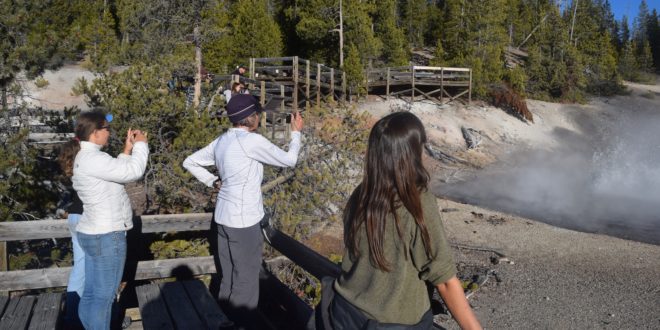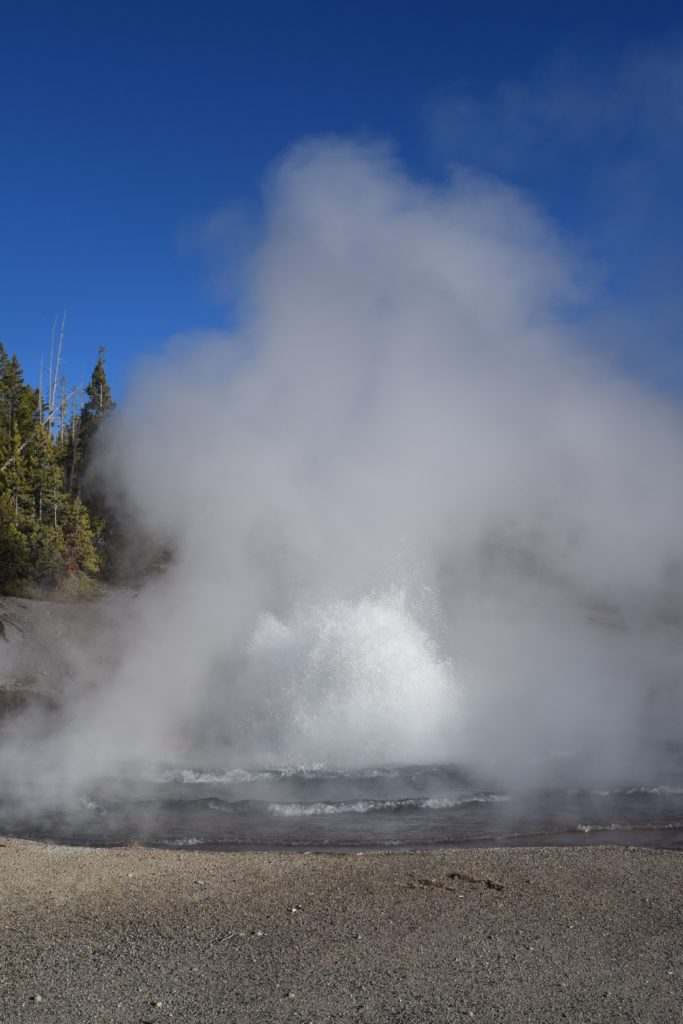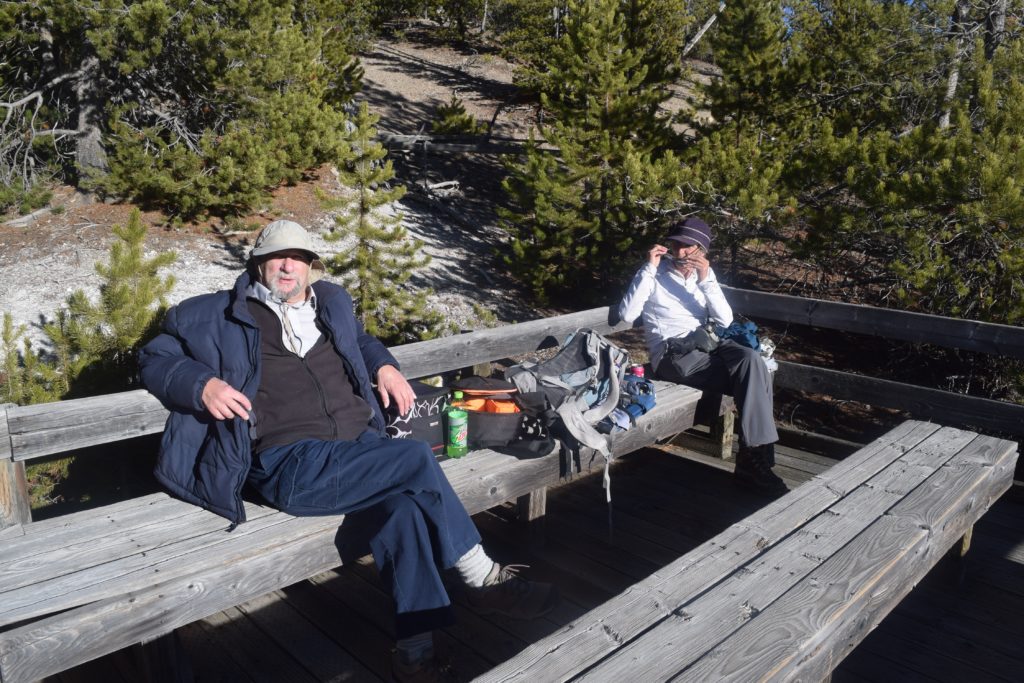Echinus Geyser is active again after a period of dormancy.
Echinus is a geyser located at Norris Geyser Basin. After a fairly regular eruption pattern in the 1970s and ‘80s, the National Park Service constructed bleachers-like seating around it.
A fountain-type geyser—meaning that it splashes upward from a pool, unlike the cone-type geyser such as Old Faithful—Echinus was a crowd-pleaser, especially when its bursts dowsed the crowd with a geyser shower.
The geyser was named for a genus of spiny sea urchins called echinus, author Lee Whittlesey tells us in his book, Yellowstone Place Names. A member of the Hayden Survey of 1878 said Echinus reminded him of sea urchins, due to the spiny appearance of the rock formation around the geyser.
But Echinus stopped erupting regularly back in the late 1990s with sporadic eruptions ever since, including a series in 2015, according to Mary Anne “M.A.” Bellingham, a Yellowstone buff who is known affectionately among the geyser fans as “Mama Norris.” She spent most of Saturday clocking Echinus eruption data—including the intervals between eruptions and the duration of eruptions. She also records the length of time between when the depth of the pool rises and then begins to overflow—an indicator that Echinus is about to blow — and the first burst of an eruption.
Geyser activity can come and go, influenced by any number of factors. Yellowstone’s frequent, usually low Richter scale level earthquake activity definitely plays a role, opening up and shutting down the underground “plumbing systems” that creates the pressure to force hot water to the surface.
The Yellowstone Volcano Observatory, a partnership between the University of Utah, the U.S. Geological Survey and Yellowstone National Park, monitors Echinus electronically.
A small wire sensor in the geyser’s runoff channel records the temperature of the water flowing from the geyser and posts the temperatures online in real time. Temperature spikes indicate eruptions. The sensor stopped broadcasting recently, Bellingham said, but is confident it’s still recording.
The first telltale temperature spike occurred on Oct. 7, she said. Recently, Echinus eruptions have been fairly regular, occurring at 2 to 2.5 hour intervals.
On Saturday, Bellingham saw her fourth eruption of the day around 4 p.m. She was ensconced on one of the upper bleachers in a nest of warm clothes, a backpack and a notebook. She and another well-known “geyser gazer,” Rocco Paperiello, seen agove, exchanged geyser info while waiting for Echinus.
Bellingham, asked if she was a geyser gazer, said her preferred term was “interested person.” We joked that it’s better to be an “interested person” than a “person of interest.” She lives north of Yellowstone in Park County, Montana, and does research on a variety of Yellowstone topics, relating to the park’s early history or geyser observations.
The 4 p.m.-ish eruption went off about 40 feet high at its peak and lasted a little more than 3 minutes. About 20 visitors got to see it. Paperiello and Bellingham, enthusiastic and forthcoming, encouraged those who looked like they might keep on walking to stick around for the show.
Echinus did not disappoint, sending up showers of sparkling droplets in the golden late-afternoon sunlight.
A few of us applauded.
“Thank you,” one of the tourists standing nearby said. “I would have walked away.”
 Yellowstone Insider Your Complete Guide to America's First National Park
Yellowstone Insider Your Complete Guide to America's First National Park








You must be logged in to post a comment.